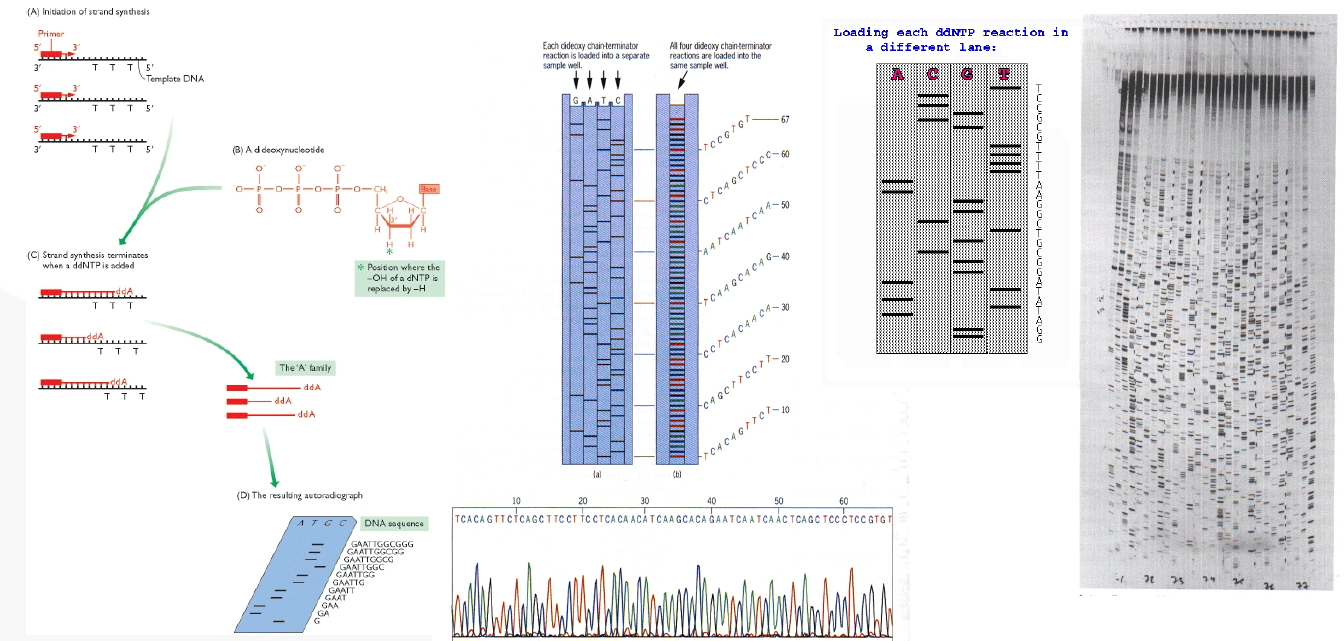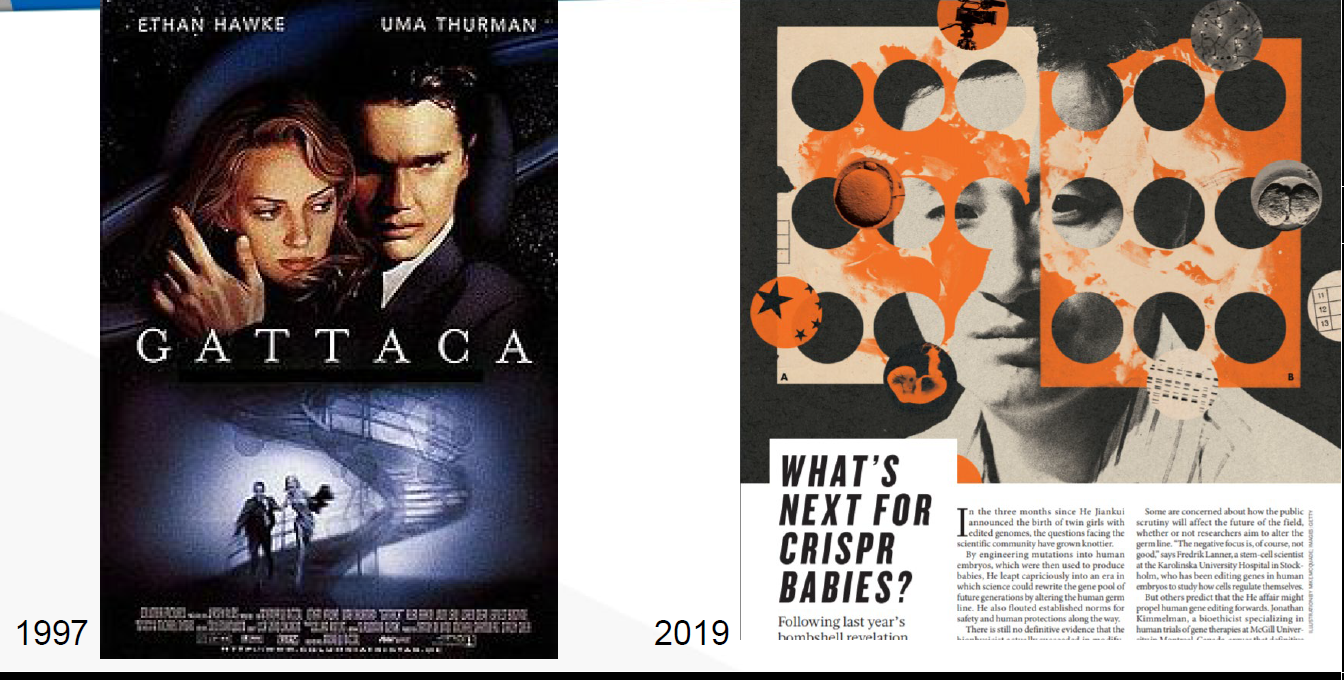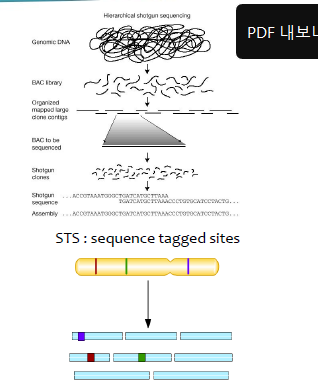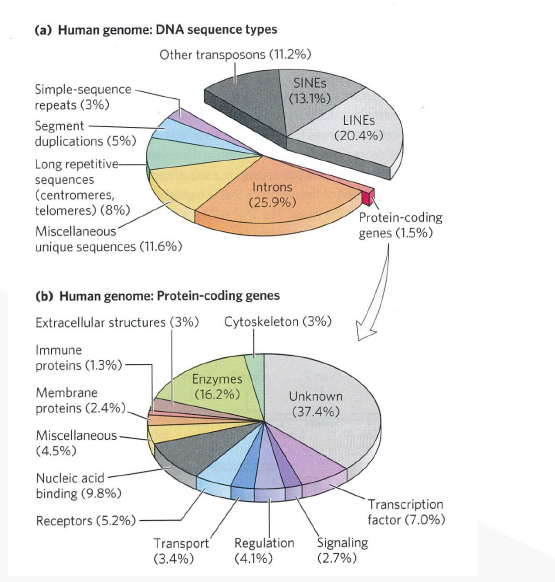History of Human Genome
*Flow

*Sanger sequencing
크기순으로 정렬된 서열의 순서대로 형광 신호를 인식시키면, 염기서열 순서대로 해당 염기 서열에 해당하는 핵산 정보가 각 서열 끝에 마지막으로 결합된 ddNTP가 가지고 있던 형광물질 종류에 따라 읽히게 된다.

*Automatic

*Geneic engineering

*Modified Humans

Human Genome Project
*1986 : 프로젝트의 시작
*1990 : 15년 계획, 3billion달러 예산 구축
*1990 : BLAST알고리증
*1998 : 'whole genome shotgun'접근으로 사람의 유전자 서열을 찾아냄

*1999 : 22개의 사람의 chromosome sequence
*2003: 성공.

Hierachical genome sequencing
-
5명의 사람 DNA
- 2명의 남자와 3명의 여자
- 2 caucasians, one each of asian, african, hispanic
-
DNA의 restriction enzymes부분 자르기
-
BACs서열

Snapshot of Human Genome

Gende Families
-
Clustered: a-globins, growth hormone, Class I HLA heavy chain
-
Dispersed: Pyruvate dehydrogenase, Aldolase
-
Clustered and Dispersed: HOX, Histones, Olfactory receptor
Genome characteristics
Gene Number:25,000
-
average Gense Size: 27kb
-
the largest gene: Dystrophin 2.4Mb
-
the shortest gene:tRNA^TYR
-
average exon number: 9 (largest exon number: Titin 363)
Repeates
LINEs(Long Interspersed Nuclear Elements, 20%)
SINEs(Short Interspersed Nuclear Elements, 13%)
Long terminal repeat(LIR) transposons(8%)
Simple Sequence Repeats(3%) SSR, less than 10bp
Segmental duplication(5%)
: segments of DNA with near-identical( chrY 55%, chr22 11%)
참고 사이트
Human genome
- NCBI map viewer
- UCSC Genome Browser(Golden Path)
- Ensembl Project(EBI/Sanger Institute)
Data Biology
-
Comparative Genomics
-
ENCODE(The Encyclopedia of DNA Elements)
-
Populations Genomics
